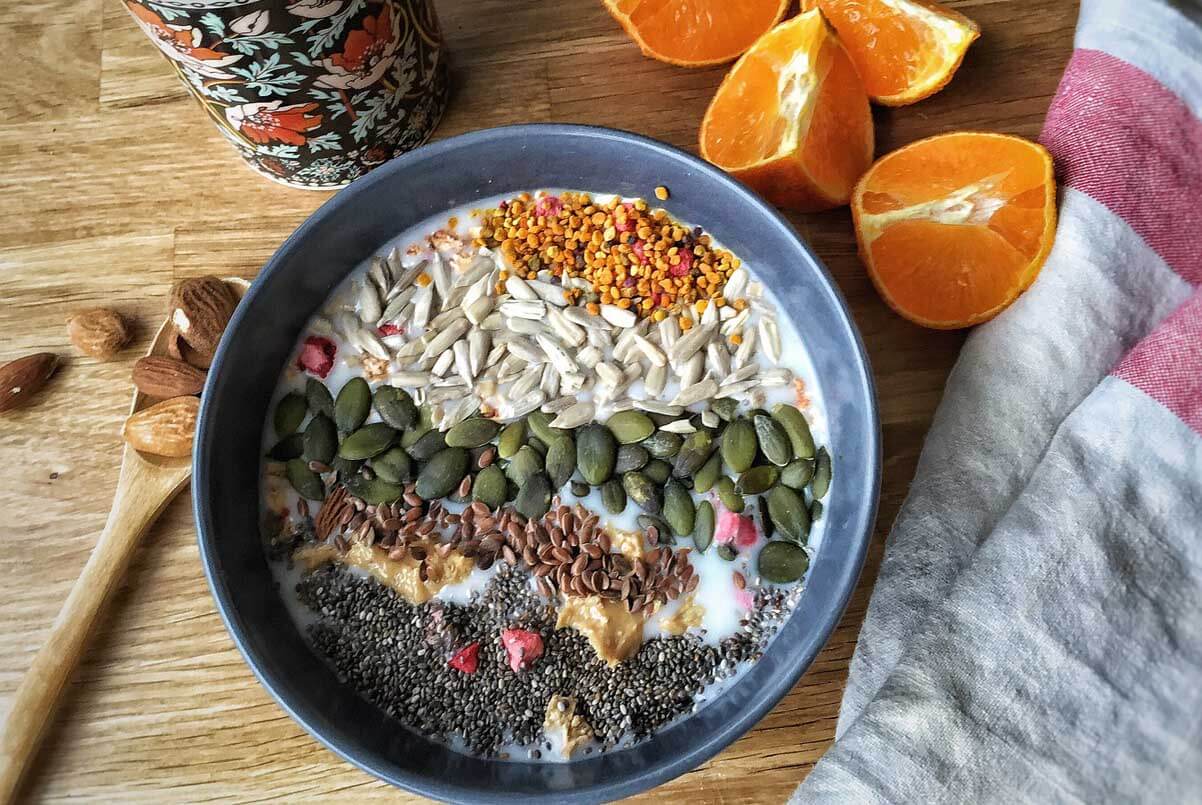Health, Healthy Cooking, Nutrition, Weight Loss
Ancient wholesome foods that should be included for weight loss
Are whole grains cereals the ‘new buzz’ in the nutrition world?
Not really, whole grains have always been there, however, they have been “rediscovered” and popularized by researchers and weight loss seekers.

What is Whole Grain?
Whole grains cereals are the ones wherein all three parts of the kernel – bran, germ, and endosperm are intact.
During refining, the bran and the germ are eliminated. This only leaves the starch-rich endosperm.
When the bran and germ are removed from whole grains, nearly 25% of a grain’s protein is lost. Furthermore, at least, 17 key nutrients are reduced in quantity.
Although some food manufacturers add back some vitamins and minerals to enrich refined grains.
Having said that, whole grains are healthier, provide more protein, fiber, and are an excellent source of several vitamins and minerals.

How do you Consume Whole Grains?
Whole grains can be consumed either in the whole, cracked, split or ground form.
They can also be milled into flour, which can be used to make bread and other processed foods.
When you’re out grocery shopping, pick up foods where the food label states that the package contains a list of whole grain.
It is requisite that the “whole grain” part of the food inside the package has the same proportions of bran, germ, and endosperm as the harvested kernel does before it is processed.
What are the Health Benefits you Reap by Consuming Whole Grains?
Here are a few common types of whole grains and the health benefits you can get out of these whole grains.
Treasure this exhaustive grains list and stick it on your kitchen cupboard. That way you’ll remember to buy them the next time you plan grocery shopping.
1. Amaranth
This whole grain has a high level of complete protein. It contains lysine, an amino acid missing or negligible in many grains.
Amaranth is known to reduce the levels of total cholesterol, triglycerides, LDL (bad) cholesterol.
2. Quinoa
Quinoa is said to have a high ratio of protein to carbohydrates and provides all the essential amino acids our body can’t make on its own.
One of the whole grains which is much preferred for weight loss.
It is also the highest of all the whole grains in potassium, which helps to control blood pressure.
What’s more, quinoa is gluten-free, that’s good news for those with gluten intolerance or celiac disease.
Quinoa may also prove to be beneficial for diabetes risk reduction.
3. Barley
Barley is a one such grain-rich source of soluble beta-glucan fiber which is known to reduce cholesterol, improve blood sugar regulation, and enhance immune system function.
The dietary fiber present in barley is said to increase the population of beneficial bacteria in the gut.
The fiber also instigates the release of specific hormones which reduces appetite and improves metabolism. Try this sprouted barley salad today

4. Rye
Rye is a rich and versatile grain that is a source of dietary fiber. A special fiber called arabinoxylan in Rye has high antioxidant activity.
5. Millets
Millet is not a single grain, but a group of several different small-seeded whole grains belonging to a particular grass family.
Next Read: 5 Millets Health Benefits & Their Role in Weight Loss
Some of the common millets are finger millet, foxtail millet, pearl millet, Kodo millet, and little millet.
Millets are gluten-free grain, rich sources of magnesium (which helps maintain normal muscle and nerve function) and shows high antioxidant activity.
Research says that millets are helpful in controlling diabetes and inflammation.
Recommended Recipe: Try this Korra Rice or Thinai Khichdi recipe
In general, since whole grains are high in fiber, they may help you feel full longer, and thereby help you control your weight.
So choose whole food grains today not just for good health but also for weight loss.
Recommended Read: 10 complete vegetarian protein sources!

Valuable information about ancient food grains. We should use these grains most of the our meals. Thanks
Thank you for writing to us. Keep following our blog